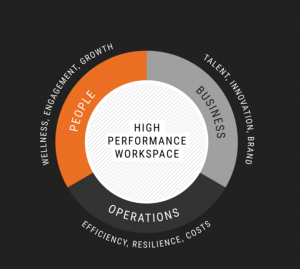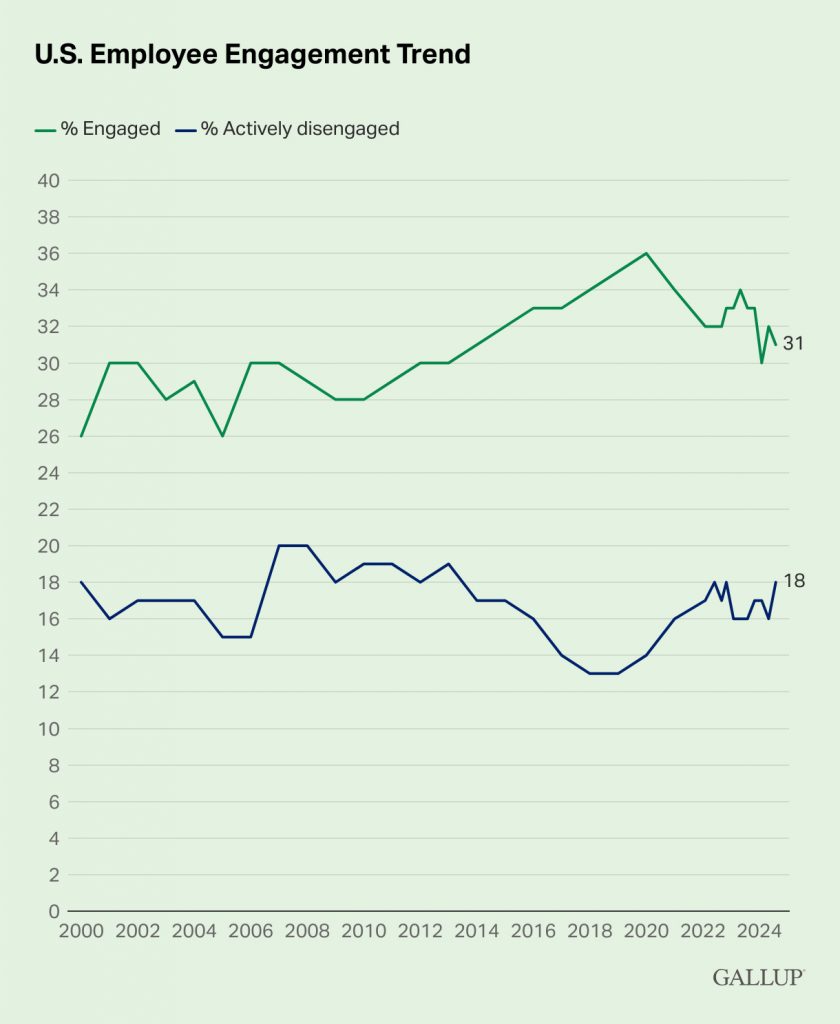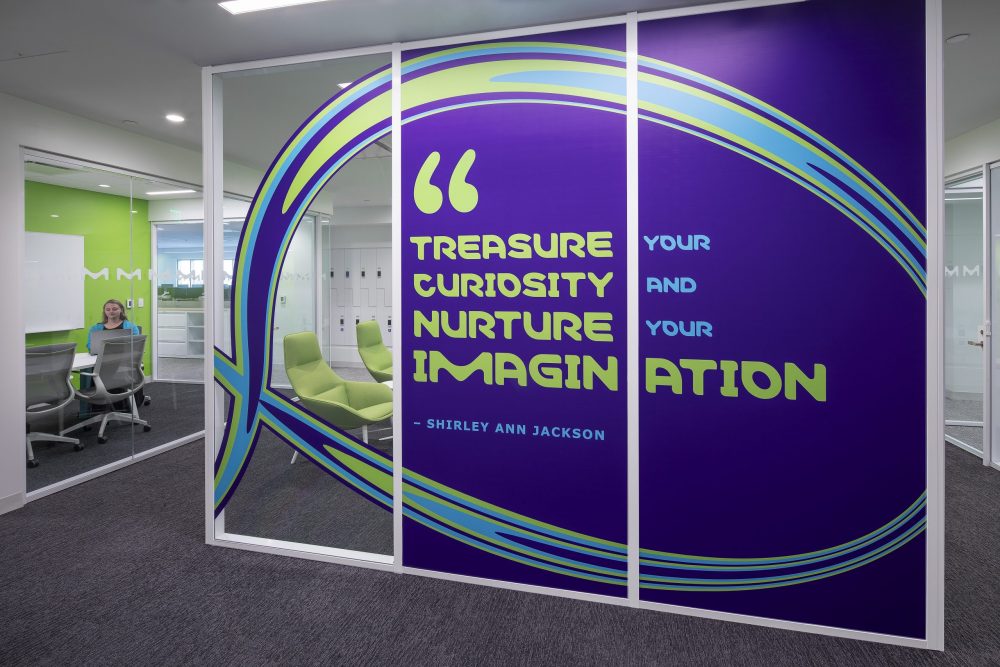[ad_1]
For the 2025 year, Stantec’s Jennifer Nye and Stephanie Wood are asking the right questions to set expectations to achieve employee engagement . Enter: The Purpose Driven Workplace.
We are sometimes asked to describe the new workplace paradigm— It’s a natural question. Most of us went home for years during the global pandemic when remote became the norm. Recently, rather than a return to normal, new questions emerged:
Why should I go back? What’s the value in the office? Who is coming to the office and when? Why does this space mean anything to me?
Our answer is that there is no new paradigm, the workplace pendulum is still swinging. As a result, there’s a lot of indecision about the office right now. But there is a way forward. Where the pendulum rests depends on the unique needs of the workplace.
To get the highest and best value from your space, it must be an intentional purpose-driven workplace that meets the needs of your people.
So how do we build a foundation for that purpose-driven workplace?

To Start: Setting Expectations, Strategy and Purpose
Expectations for the office and workplace strategy set the stage for the purpose driven office. Guidelines for how, why, and where the office will be used, by whom and on which days are important in setting expectations. Which areas of the office are associated with the individuals one wants to see and work with? Can we create a reasonable expectation that we will find the people we collaborate with when we come in? On which days can we expect to see our colleagues?
With the understanding of our expectations, the next step is workplace strategy. Workplace strategy sets the foundation of a purpose-driven workplace. To get value from the space, we must understand how people want to work, the options and elements they require to do their work.
Together, they allow the workplace to offer us something we can’t get at home. Understanding employee and employer expectations is the key ingredient in what the purpose-driven office is all about
Finally after combining expectations and workplace strategy, the purpose of the office is born, and the mix of what it offers, might vary depending on the vision or organizational mission might be. This intentional office can deliver elements that remote work can’t: collaboration, mentorship, social connections. It connects with the employee’s sense of purpose. Our research indicates that mentorship can be a particularly potent attraction to the workplace.
A lot of thinking around workplace has turned to describing what makes up the intentional office, what we call the purpose-driven workplace. But what’s been less discussed, is just how we create this intentional office, this purpose-driven workplace.
Discovering Data: What Tools Reveal Your Purpose?
We employ a variety of tools to gather data in discovering this purpose-driven workplace.
Human Psychology
We start with human psychology. Understanding what drives engagement and fulfillment is key to formulating a successful workplace strategy for an organization. Employee engagement is important in bringing us to the office, and research shows it makes a difference in performance.
Making it Data: Interviews and focus groups
We want to know what the client thinks of their space and why they use the space. Focus? Collaboration? What are the qualities they prefer in the spaces to support the activity? How is it used now, and what would be ideal? How can your environment be more effective?

Engagement and Productivity
While we often think about productivity giving a boost to the bottom line, the synergy between engagement and productivity is even more powerful. Engagement and productivity reinforce and multiply the other: When you are passionate about your work, you can achieve more. When you’re achieving more, you are more satisfied. Research shows that a high level of engagement is profitable. Gallup’s State of the American workforce reports that companies with higher engagement are 21 percent more profitable and have better financial outcomes overall, outperforming the S&P 500 after a year.” And this recent Microsoft analysis comes to a similar conclusion; engagement matters.
Making it Data: Digital and Analog Observation:
We want to know how people are using the space. We observe human behavior, digitally and visually, to see how they interact with the environment. We review the data for qualitative aspects of the space. How do people move through the workplace during their day? Can we make it easier to get around? More efficient?
Our research is a deep dive into the elements that drive engagement in each unique workplace. We welcome input from a cross section of employees. We gather their thoughts, we listen to their voices, we give them space to bounce ideas and experience of one another. It’s important for us to build trust during this process of discovery. And it’s important for this research to allow for strategic input from top to bottom of the organization. And the details are important: who are we engaging and when? Doing this well requires an investment from the organization.
Making it Data: Real-time and historic utilization data
We want to know when people are using the space, how often, and how many of them are doing it. Do we see patterns over time? At what time of day, time of week, time of month or time of year? Do we expect the organization to grow based on its history or business expectations? Can we forecast how changing technology, service offerings and business drivers will inform flexibility and adaptability of the workplace?

The better the data, the deeper our understanding of what the workplace needs to succeed. So, we’re always optimizing the tool set we use for data collection to get the most valuable results.
We need to use all the tools above to paint a holistic picture of the workplace. But we also need the ability to break out the data and analyze it by segment.
Looking for Purpose in the Data
Next, we sift through the data and analyze it. We’re looking for insights—revealing truths about human experience as it relates to real estate and business operations. We’re especially interested in key insights around what drives employee satisfaction, optimizes real estate utilization and enhances operational efficiency. We’re writing a unique recipe for a purpose-driven workplace.
Informed by this data and analysis, we create a solution for the client. We customize this workplace design solution to suit the physical environment, operations, vision, culture, strategy, and human dynamics of the organization. A beautifully designed space is nice, but even a beautifully designed space needs the right strategy, expectations, and data-informed solution behind it to succeed as a workplace.
All images courtesy of Stantec.
Want More Insight from Stantec?
Live, Work, Play: Office building conversion practices for downtown revitalization
[ad_2]
Source link

